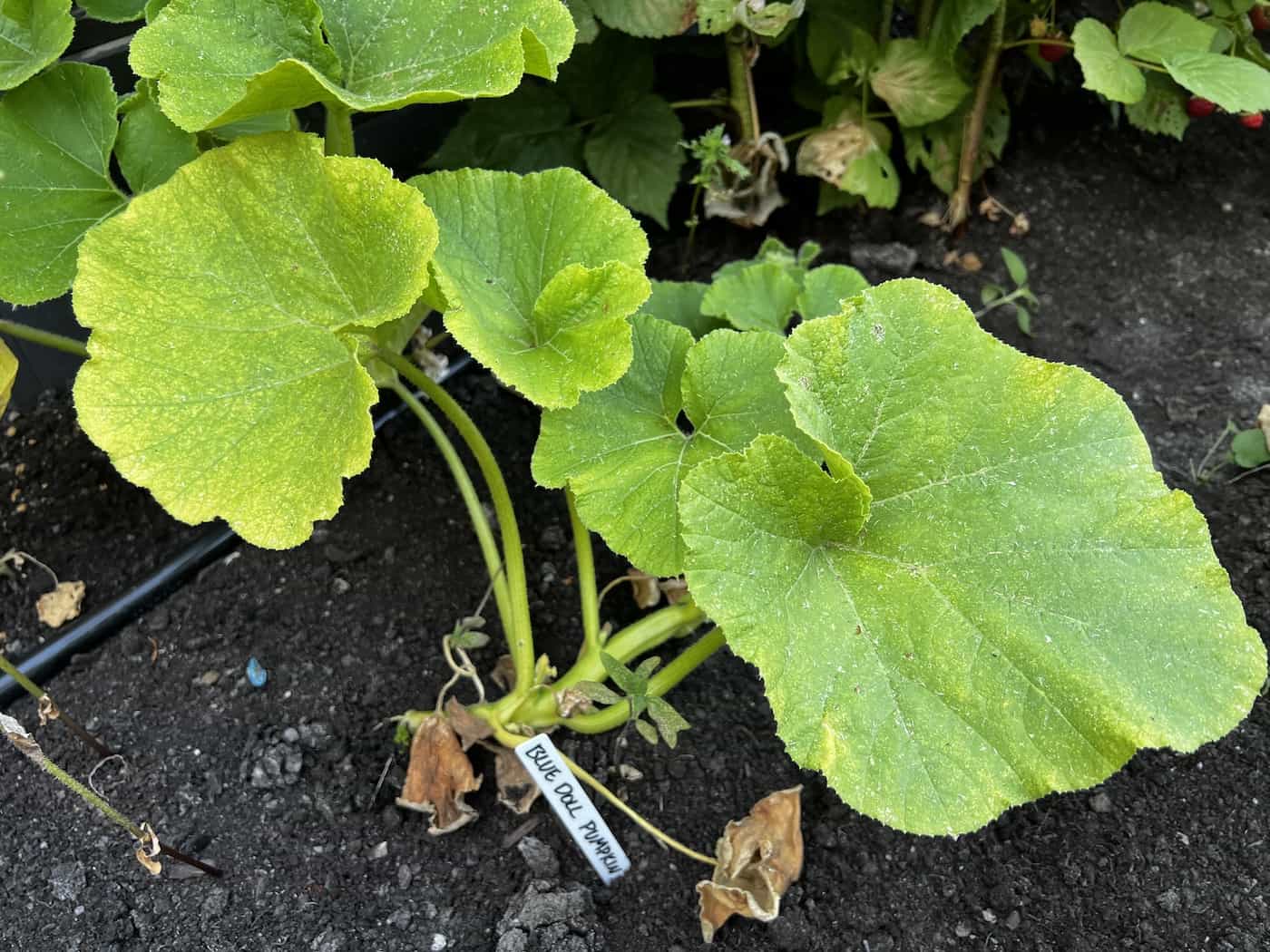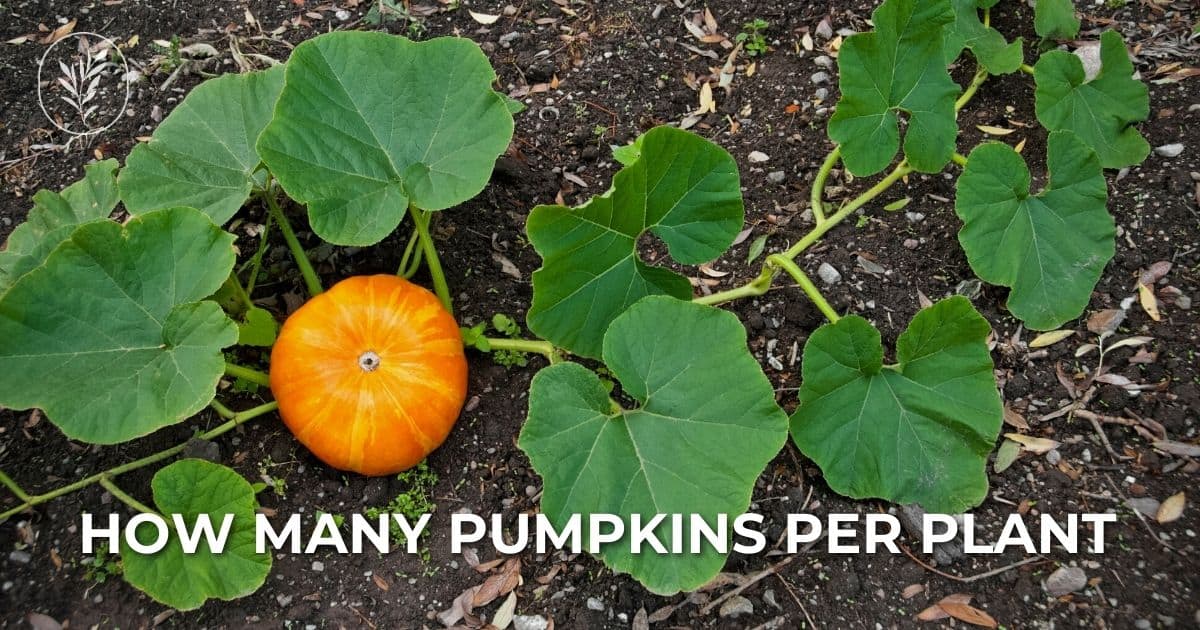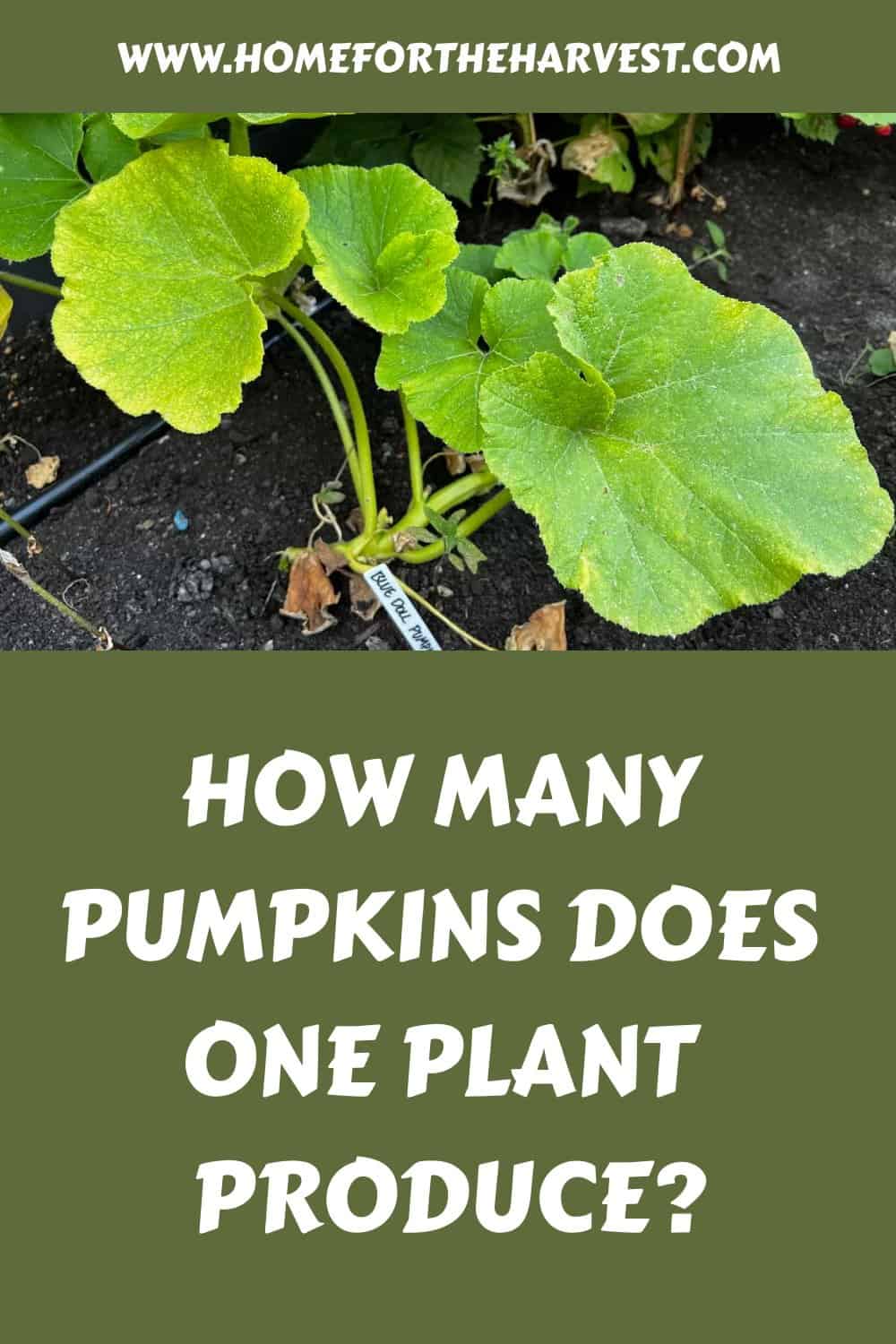Pumpkins are incredibly rewarding plants to grow in your edible garden, and so it’s common to wonder how many pumpkins per plant to expect at harvest time. Whether you’re growing mini varieties for your fall décor or giant pumpkins to impress, it’s important to know what to expect.
Standard pumpkin plants typically produce 3-5 pumpkins per plant, while smaller varieties produce about 10 on average. Large pumpkin varieties focus all their energy on one or two fruits at a time. While there is no way to make your pumpkin plant produce more than it naturally would for the variety, the right care and environment can maximize your yield.
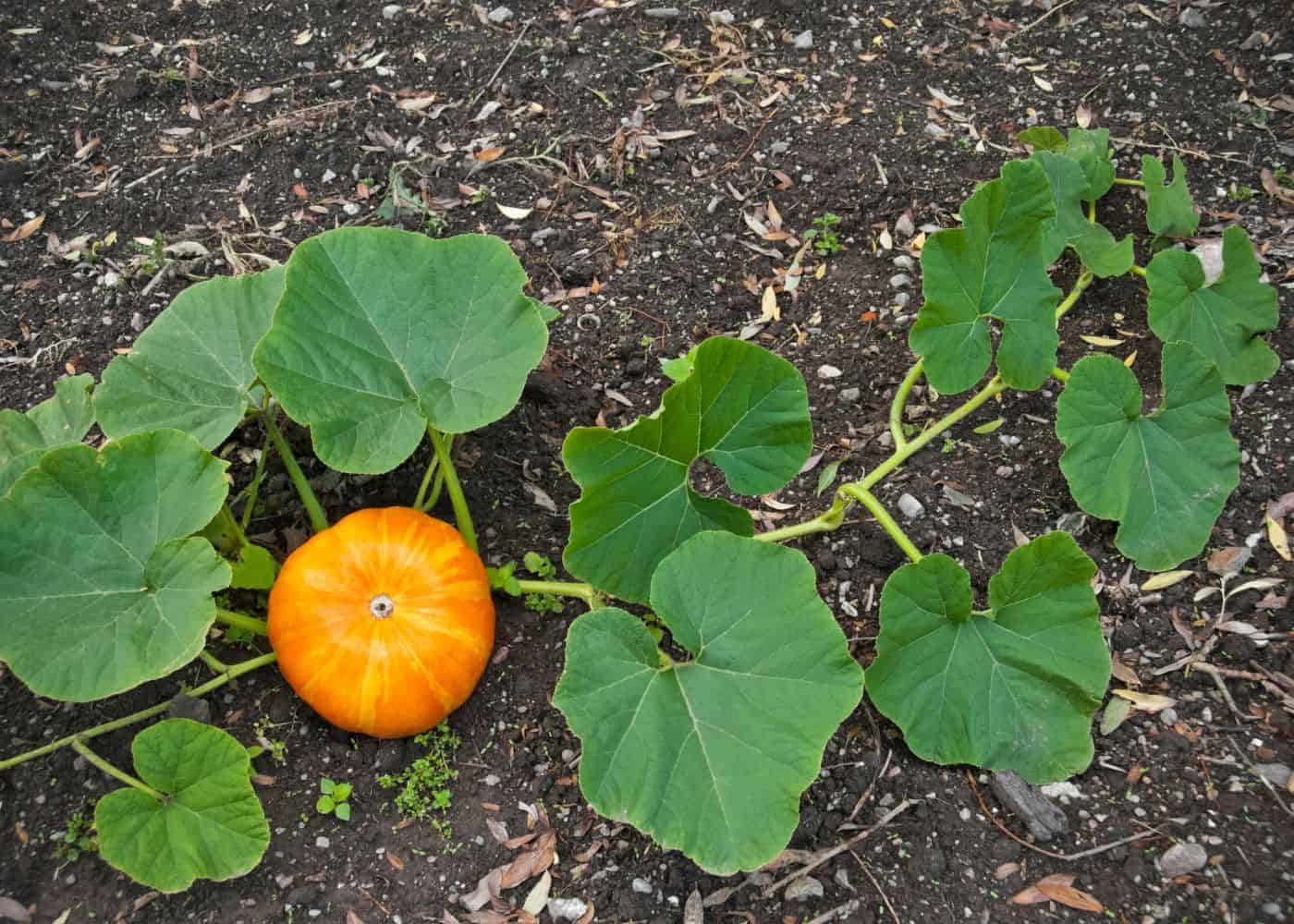
What determines the number of pumpkins per plant?
There are a number of factors that influence how many pumpkins you will get from one plant. Some are under the control of the gardener, while others aren’t.
The biggest influence on pumpkin yield is the variety chosen. Growing pumpkins takes a lot of effort, so as a general rule, the larger the variety, the fewer pumpkins you’ll get. For example, if you’re looking to enter a pumpkin-growing competition, you’ll want the plant to focus on producing only one pumpkin. Smaller varieties can support more fruits, although they will be smaller in size.
Care and environment also play a role. Sunlight and water are the most important elements to control to improve yield, but soil conditions and nutrient levels also play a role in how many pumpkins one plant produces. The perfect care and conditions will push your plant to produce as many pumpkins as it is able to.
There are also things out of your control, like excessive rain or pests and diseases, that can negatively impact yield. Preventing these issues from affecting your plants is the best way to increase your harvest as they are often difficult to fix once they have set in.
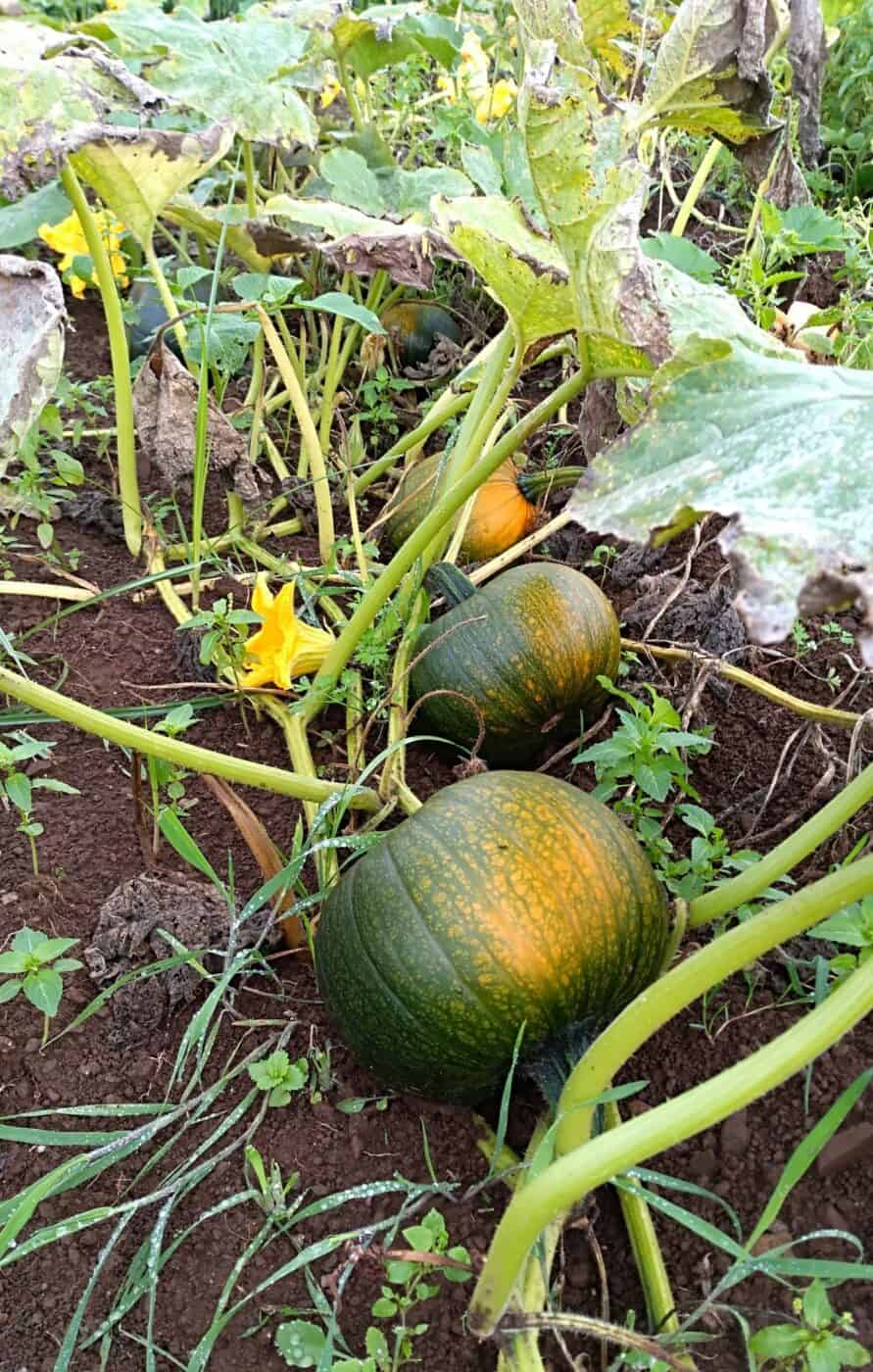
Pumpkins per plant by size
As pumpkin type is the factor with the most influence, let’s break down how many pumpkins you can expect by size.
Medium-sized pumpkins (or standard pumpkins), spanning several varieties commonly grown around the world, will produce around 3-5 pumpkins per plant. They may produce less if conditions or spacing are not optimal, but 5 is generally the most you’ll find on a medium-sized pumpkin.
Smaller varieties (also minis) produce far more fruits on a single plant. You can expect around 10 pumpkins per plant, or a range between 8 and 12 on average. Sugar Pie is just one example of this type, although there are many more to choose from.
Finally, there are the large or giant pumpkins. With these varieties, the focus is on size over yield. That’s why these types typically produce one large pumpkin, or possibly two depending on the plant.
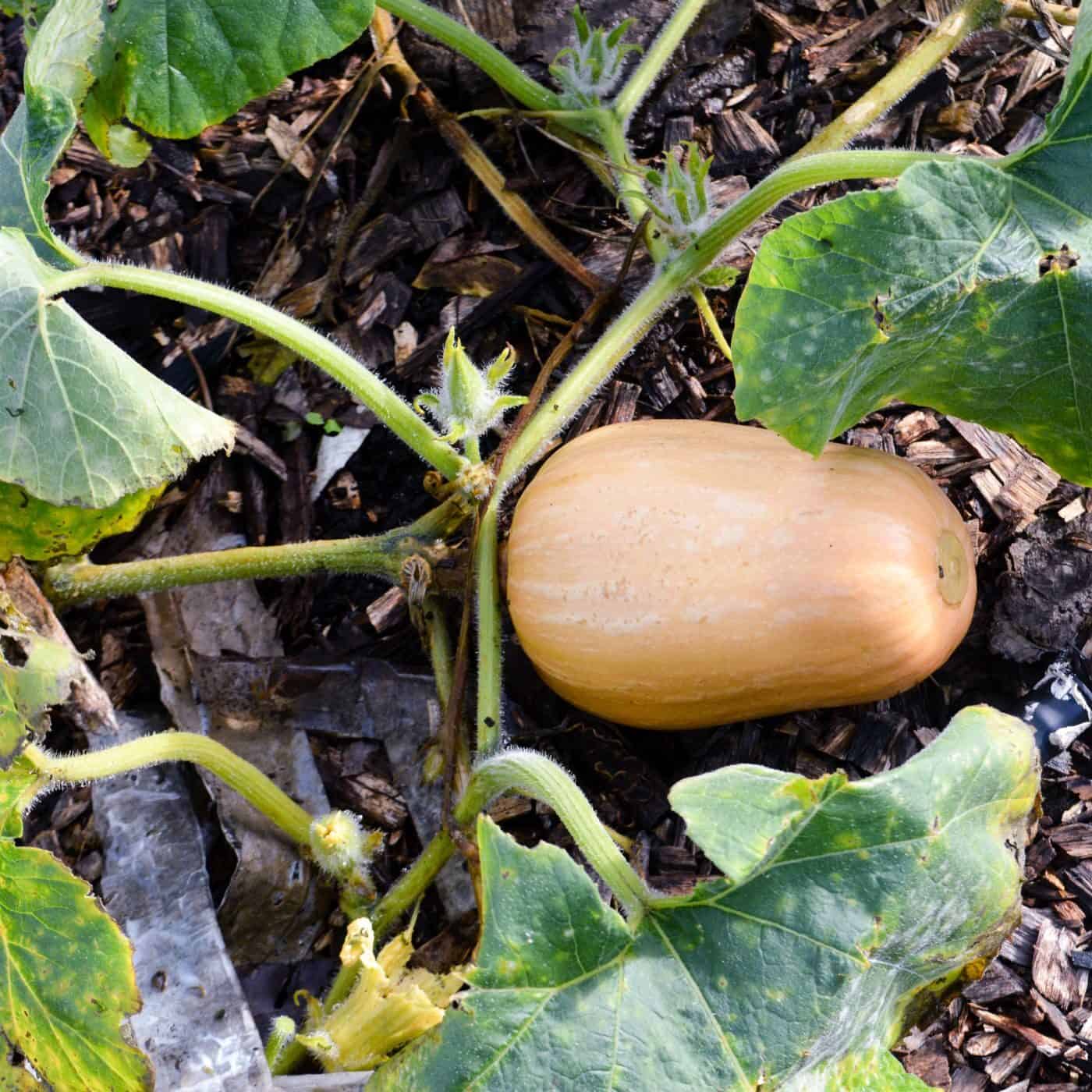
How to increase pumpkin yield
You can’t get pumpkin plants to produce more than they naturally can. But, there are a few ways to maximize the potential yield for your chosen variety.
Improve spacing
Pumpkins tend to be competitive, devouring resources and smothering out other plants. Spacing two hungry pumpkin plants too close together will lead to competition that ultimately reduces the yield of both plants. At planting time, make sure you follow the spacing guidelines on your seed packet and thin out seedlings to leave only the strongest plants.
Enrich the soil
As pumpkins are considered heavy feeders, they will quickly use up the available nutrients in the soil. To get as many pumpkins as possible from your plant, make sure they always have a steady supply of nutrients to fuel their growth. Start by enriching the soil with plenty of compost before planting. Then, follow a consistent fertilizing schedule from soon after planting to flowering, providing the right nutrients at the right time.
Provide full sun
Sunlight is essential for strong growth. Producing pumpkins takes plenty of energy, only made possible through sunlight and photosynthesis. Pumpkin plants need a full day of direct sun for the best possible growth. Six hours of direct sunlight is the minimum, but closer to eight (or more in cooler climates) will deliver the best possible results. If you live in a warmer climate, keep in mind that more sun will require more frequent watering.
Water consistently
Speaking of watering, this essential care task also plays a vital role in plant health. Pumpkins use up plenty of resources during fruit production, including water. Watering regularly is important, but consistently moist soil is one easy way to improve yield. With a consistent supply suited to the plant’s needs – not too little or too much – you will avoid stress and stunted growth that can impact overall yield.
Prune selectively
With limited resources, plants can prioritize certain types of growth over others. Although leaf cover is needed while the plant is becoming established for photosynthesis, once your pumpkin plant starts flowering, the focus should shift to producing fruits. To direct the energy of the plant where you want it, prune dense areas of leaf growth. This will also increase air circulation, limiting your chances of disease.


